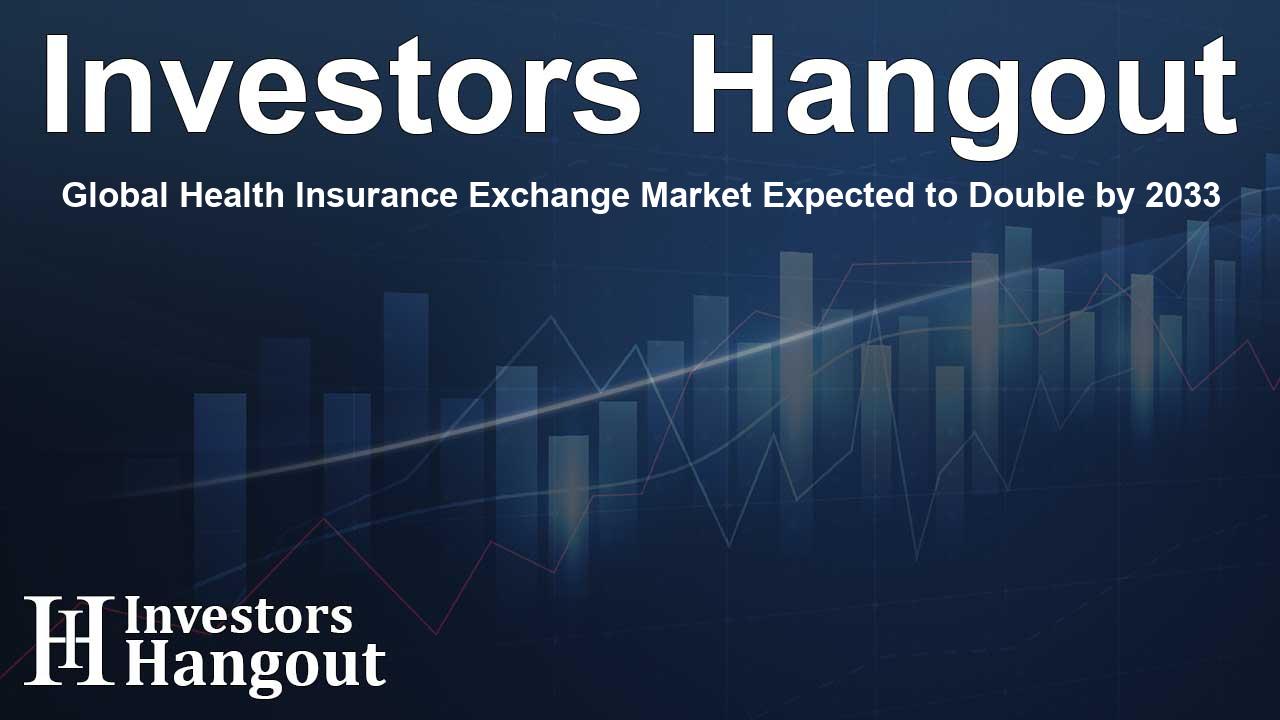Global Health Insurance Exchange Market Expected to Double by 2033

Global Health Insurance Exchange Market Overview
The health insurance exchange market is set to experience substantial growth, projected to reach an impressive $5.3 trillion by 2033, increasing from a valuation of $2.7 trillion in 2023. This growth trajectory reflects a compound annual growth rate (CAGR) of 7.1% from 2024 to 2033. The increasing demand for affordable and accessible healthcare coverage is the primary driver behind this trend.
Factors Fueling Market Growth
The evolution of health insurance exchanges reflects a strategic response to the need for more flexible health insurance solutions. Public exchanges capture a significant market share by offering accessibility and government subsidies. They serve individuals who are influenced by financial considerations when seeking health coverage. In contrast, private exchanges provide a more personalized approach. They present a variety of plans and tailored services that are attractive to employers seeking customized health benefits for their employees.
Challenges with Traditional Group Insurance Plans
While group health insurance offers certain benefits, it does come with limitations. A major drawback is the lack of flexibility that restricts workforce members from choosing their preferred network, deductible, or premium. Recognizing these limitations, many employers are exploring alternative solutions that offer improved customization and value for their employees.
The Role of Technology
The introduction of blockchain technology plays a pivotal role in revolutionizing health insurance exchanges. This technology enhances operational efficiency, improves data security, and significantly reduces fraud incidents. By leveraging blockchain, exchanges can simplify administrative tasks and streamline their processes. This ultimately leads to faster claim approvals and a more user-friendly experience for policyholders.
Segment Insights
Insurance Type: Family Health Insurance Growth
Among the various types of insurance, family health insurance is expected to grow at a rapid pace during the forecast period. It provides comprehensive coverage that encompasses the entire family, making it an attractive, cost-effective option. Compared to individual plans, family health insurance generally features lower premiums, enhancing affordability.
Distribution Channels: Online Platforms on the Rise
Digital technology is reshaping the health insurance landscape. Online health insurance exchanges offer users easy access to a plethora of plans, enabling better comparison and informed decision-making. The ability to compare features and pricing across multiple plans is a significant advantage. Moreover, online platforms incur lower overhead costs, allowing for reduced premiums and enhancing user affordability.
End User Dynamics: Adults as Primary Consumers
Adults are the primary consumers of health insurance exchanges, often driven by their complex healthcare needs. As the population ages, insurance becomes increasingly vital for maintaining health and accessing quality care. Adults benefit from the flexibility these exchanges provide, enabling them to choose the plans best suited to their requirements and financial situations.
Regional Market Growth
A particular focus should be placed on the Asia-Pacific region, which is anticipated to demonstrate the most rapid growth during the forecast period. As healthcare costs rise and consumer awareness increases, health insurance exchanges are becoming more prevalent in this region. Countries such as Singapore and Malaysia are fostering environments that promote transparency and accessibility in healthcare coverage.
Major Industry Players
Key players in the health insurance exchange market include renowned names like Allianz, AXA, and Prudential Financial. These companies employ various strategies, including new product offerings, strategic collaborations, and market expansions to enhance their competitive edge.
Recent Developments in the Industry
Recently, the U.S. has seen an unprecedented rise in Affordable Care Act (ACA) Marketplace enrollments, nearly doubling since previous years. This surge has largely resulted from enhanced subsidies that reduce premiums, making healthcare more accessible to millions.
Frequently Asked Questions
What is the projected size of the global health insurance exchange market by 2033?
The market is expected to reach $5.3 trillion by 2033, growing at a CAGR of 7.1%.
What are the main drivers behind the market growth?
The primary drivers include the demand for affordable insurance options and the adoption of technology like blockchain for better security and efficiency.
Which insurance segment is expected to grow the fastest?
The family health insurance segment is anticipated to see the most rapid growth due to its cost-effective nature and comprehensive coverage.
How are online platforms influencing the market?
Online platforms facilitate easier comparisons and are more cost-effective, driving greater consumer engagement and choices.
Who are the key players in the health insurance exchange market?
Major players include Allianz, AXA, and Prudential Financial, among others, who are implementing diverse strategies to enhance their market presence.
About Investors Hangout
Investors Hangout is a leading online stock forum for financial discussion and learning, offering a wide range of free tools and resources. It draws in traders of all levels, who exchange market knowledge, investigate trading tactics, and keep an eye on industry developments in real time. Featuring financial articles, stock message boards, quotes, charts, company profiles, and live news updates. Through cooperative learning and a wealth of informational resources, it helps users from novices creating their first portfolios to experts honing their techniques. Join Investors Hangout today: https://investorshangout.com/
Disclaimer: The content of this article is solely for general informational purposes only; it does not represent legal, financial, or investment advice. Investors Hangout does not offer financial advice; the author is not a licensed financial advisor. Consult a qualified advisor before making any financial or investment decisions based on this article. The author's interpretation of publicly available data shapes the opinions presented here; as a result, they should not be taken as advice to purchase, sell, or hold any securities mentioned or any other investments. The author does not guarantee the accuracy, completeness, or timeliness of any material, providing it "as is." Information and market conditions may change; past performance is not indicative of future outcomes. If any of the material offered here is inaccurate, please contact us for corrections.